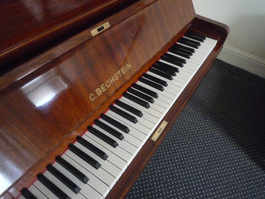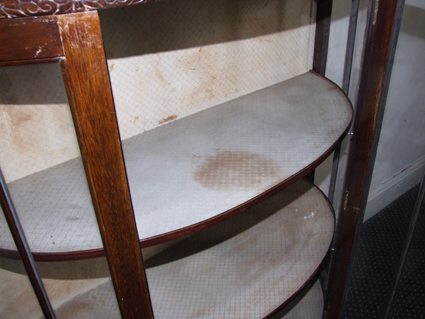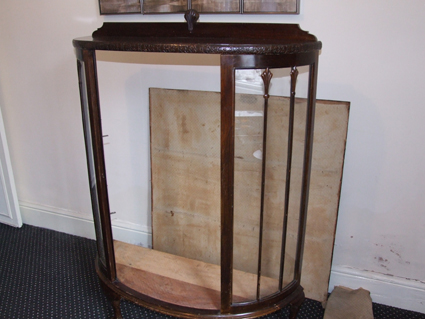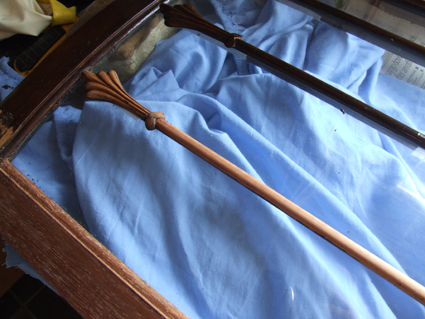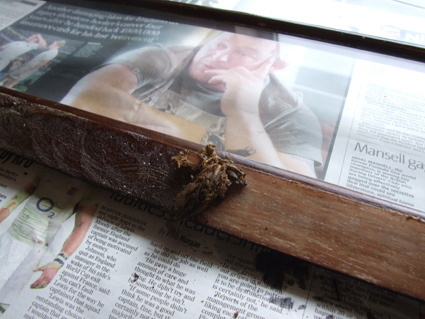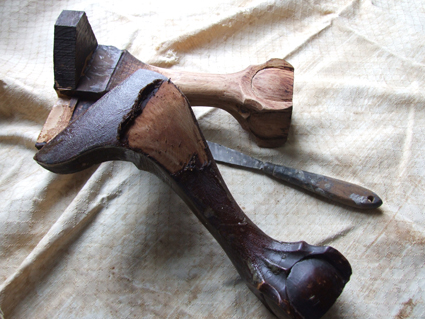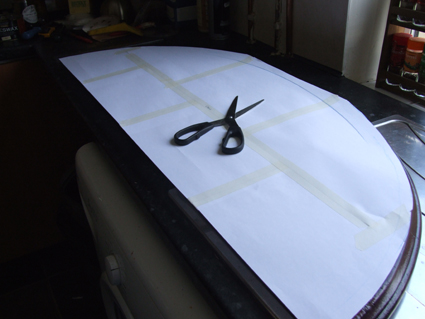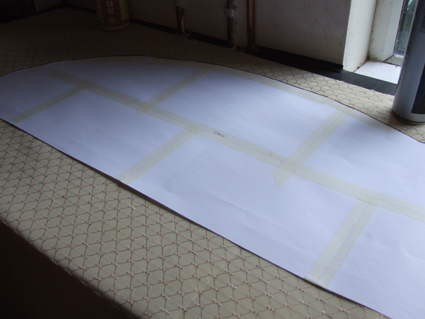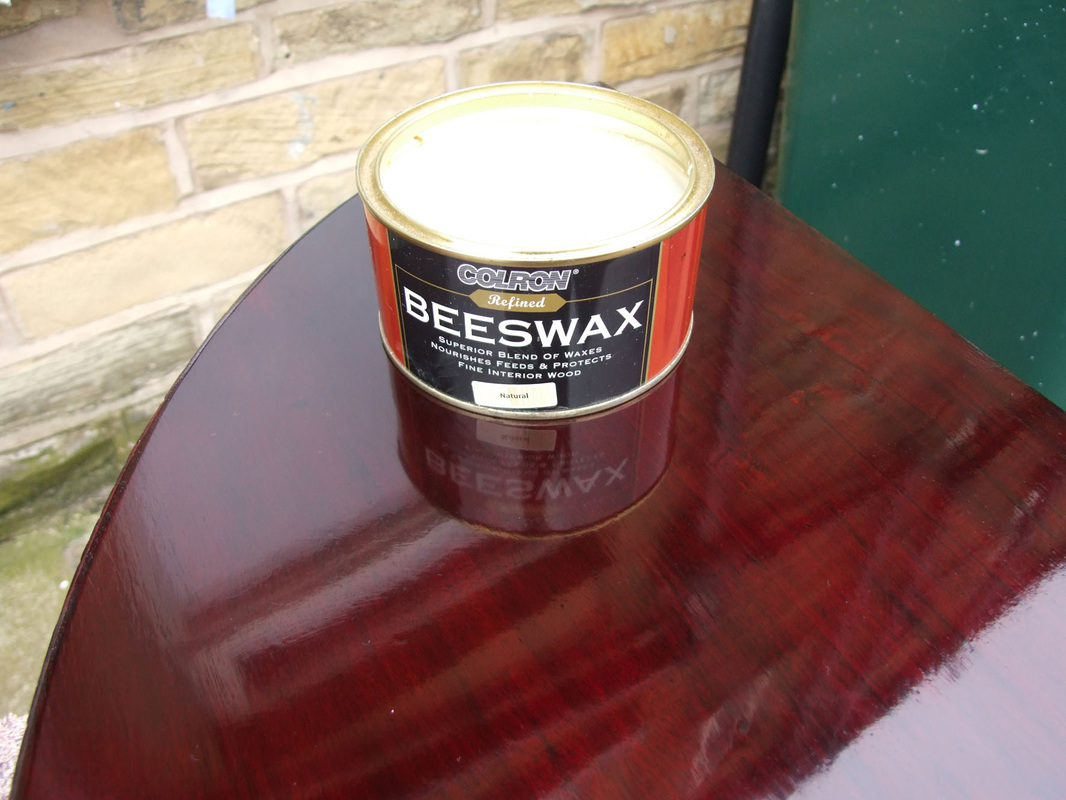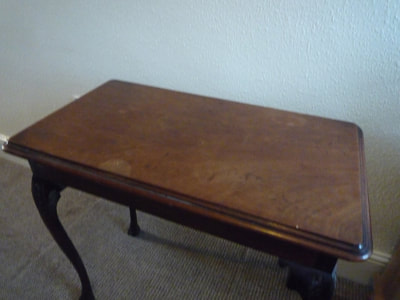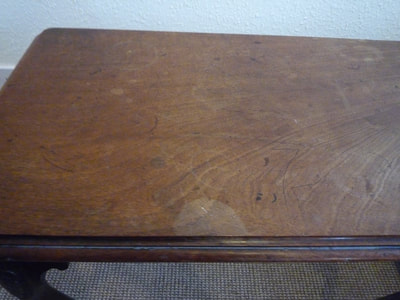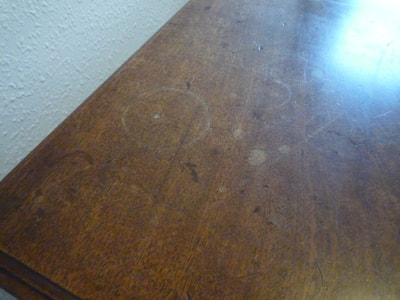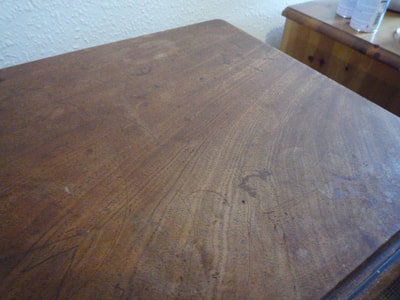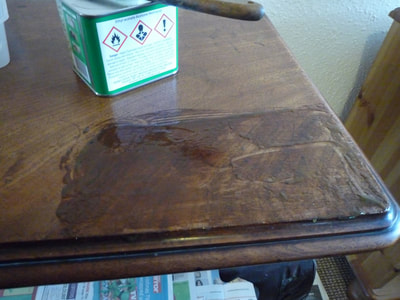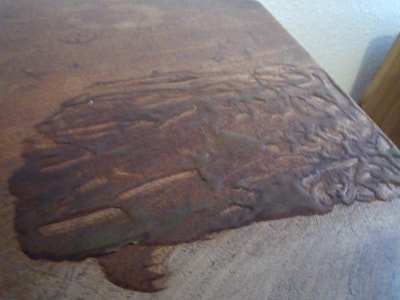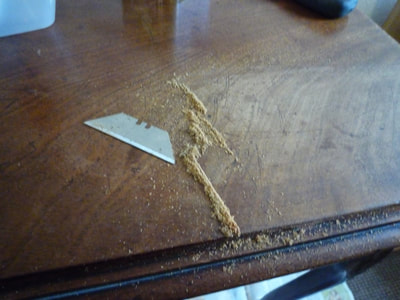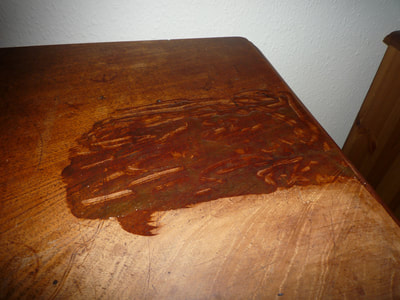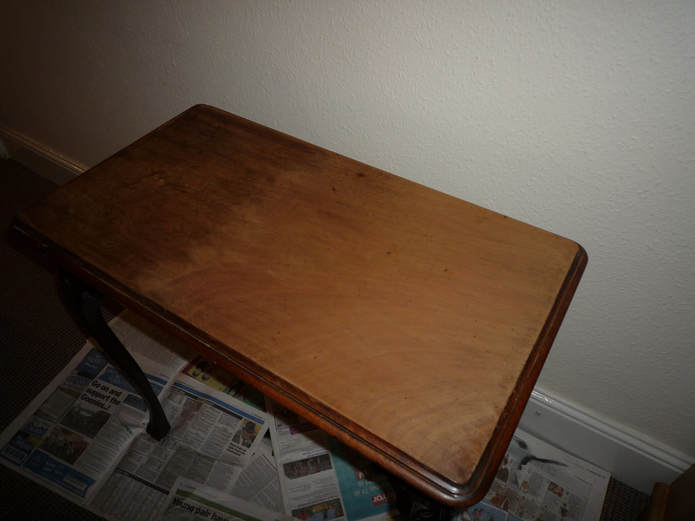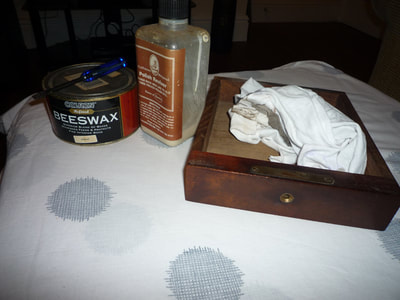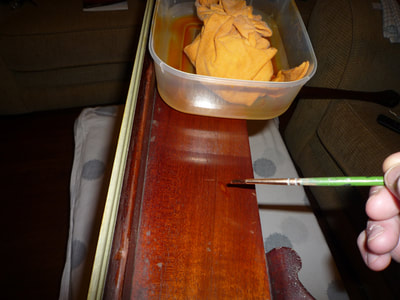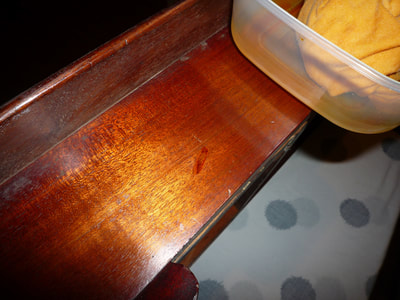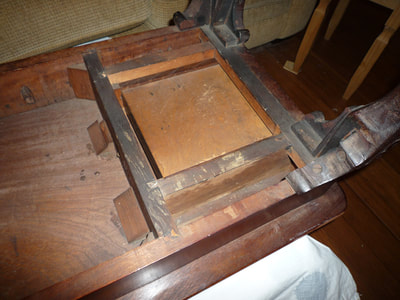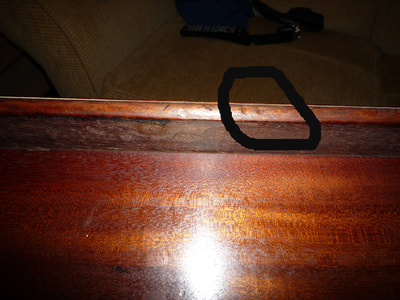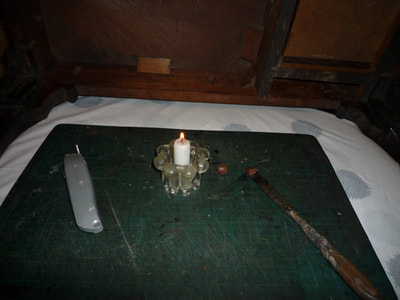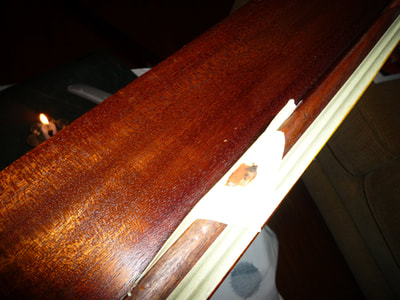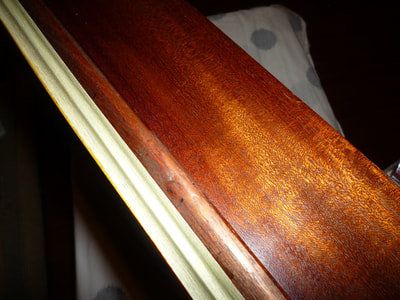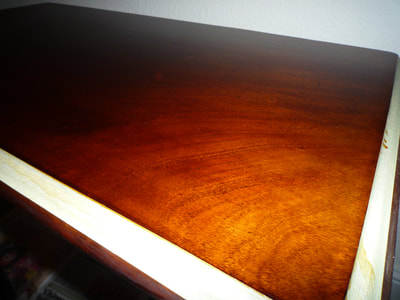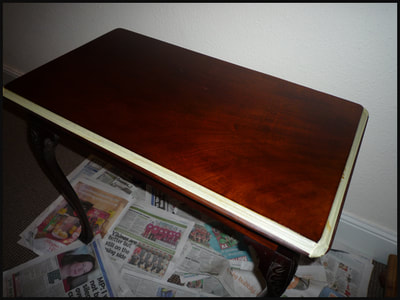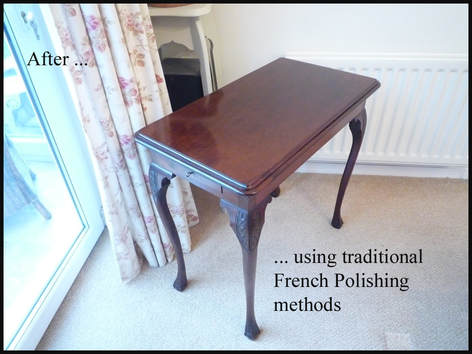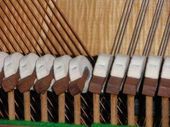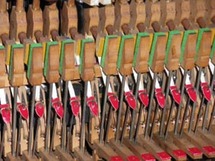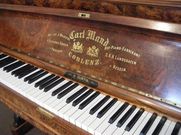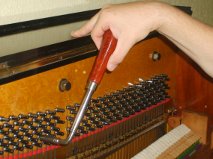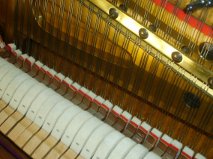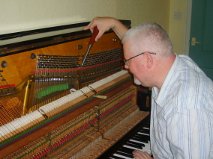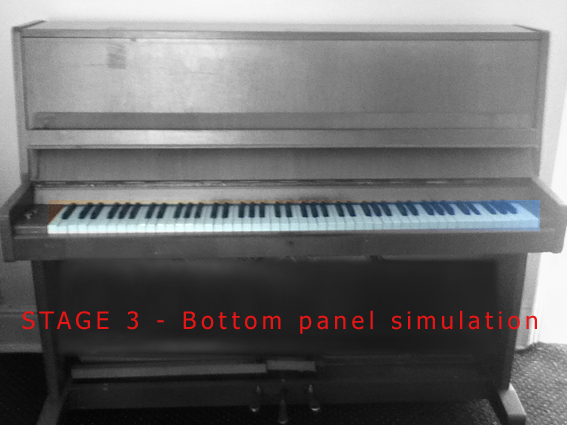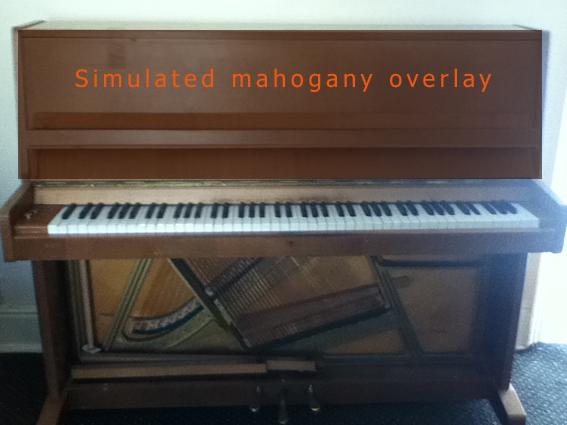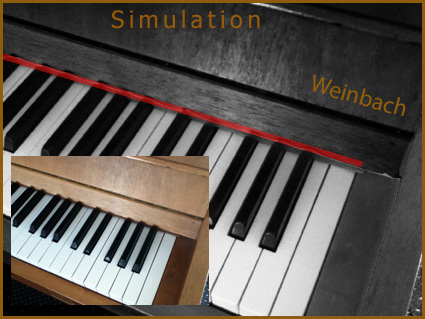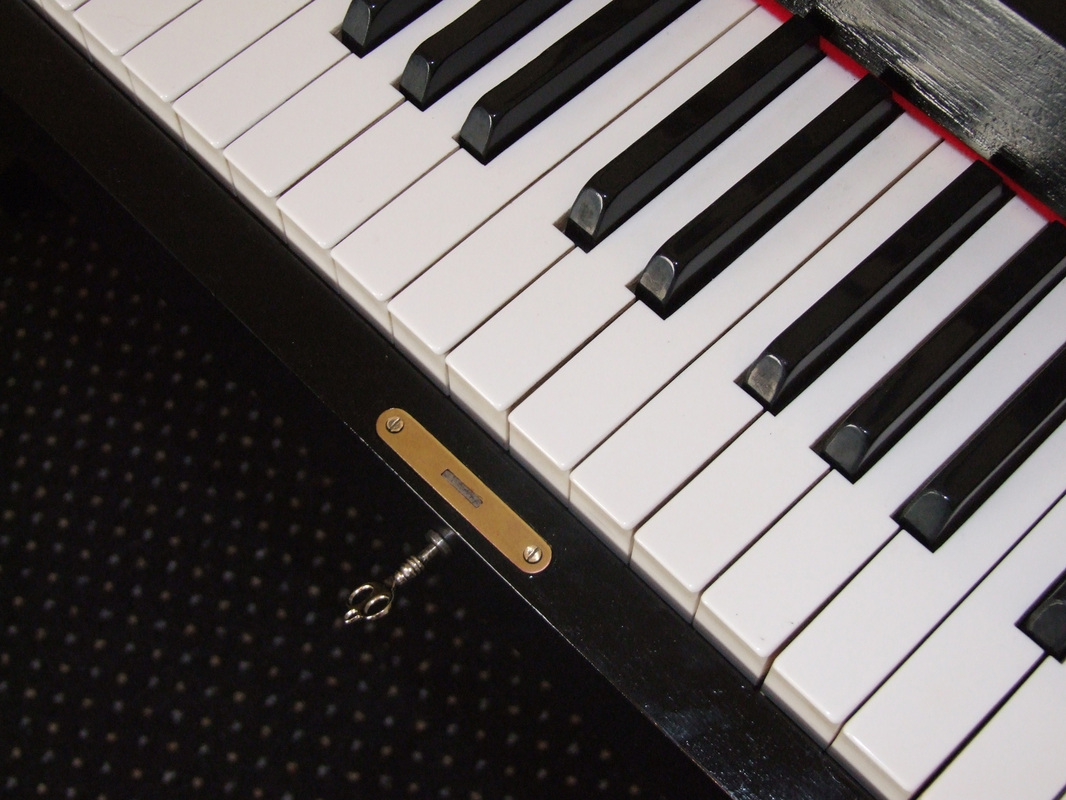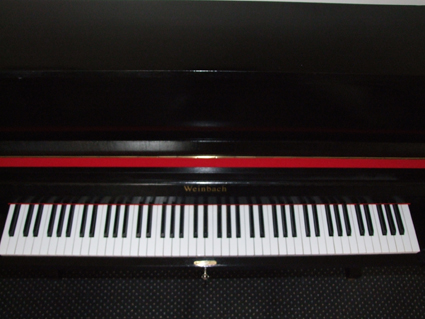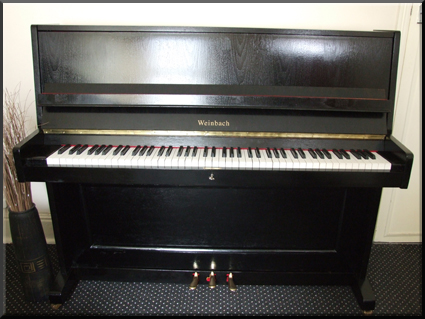Restoration & Polishing
Upright Pianos / HOUSEHOLD FURNITURE
If your piano needs just that one step further in repairs, we also carry out various restoration and refurbishment package deals. If you are considering a restoration, please contact us to arrange your assessment report visit. We will fully inspect your piano in these areas: Mechanism, keyboard, pedals, casework, strings and structural areas such as the soundboard.
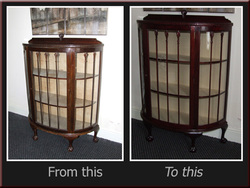 Victorian China Cabinet Restoration
Victorian China Cabinet Restoration
Full restoration to a Victorian China Cabinet
New custom-fit cream lace fabric back-drop & shelving
Spear shaped window frames
Head board & finial design to top
French Polished in traditional Rosewood
Not long after a customer had their piano re-polished with us (and re-strung), we were asked.... "is there anything you could do with this?" ...... this China Cabinet was fully restored including French Polishing, new back-drop ply wood, and all shelves and back-drop re-fabricated with lace cloth.
LATE VICTORIAN STYLE SMALL TABLE WITH DRAWER
QUEEN ANNE / BALL & CLAW STYLE LEGS
JOB DETAILS: STRIP DOWN, REMOVE SCRATCHES & DENTS/ BRUISES/ REPAIRS, FRENCH POLISH & FINISHING
BEFORE PHOTOS >>
Showing scratches, water marks, blemishes, dents, faded patches, and general wear and tear
QUEEN ANNE / BALL & CLAW STYLE LEGS
JOB DETAILS: STRIP DOWN, REMOVE SCRATCHES & DENTS/ BRUISES/ REPAIRS, FRENCH POLISH & FINISHING
BEFORE PHOTOS >>
Showing scratches, water marks, blemishes, dents, faded patches, and general wear and tear
STAGE ONE: START CHEMICAL STRIPDOWN - REMOVE OLD POLISH/ WAX/ DIRT SURFACES >>
STAGE TWO: START OF COURSE SANDING & SCRAPING TO REMOVE DEEP SCRATCHES & FADING (rh)
STAGE THREE: REPAIRS & GENERAL CLEANING
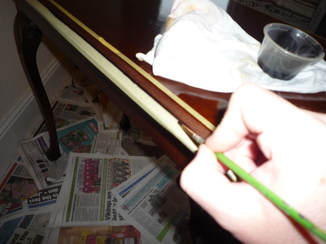
STAGE FOUR: RELIEF WORK
Masking off around internal corners & edges.
Using ebony wood stain to highlight relief areas prior to polishing.
Masking off around internal corners & edges.
Using ebony wood stain to highlight relief areas prior to polishing.
STAGE FIVE: FRENCH POLISHING TABLE TOP (BUTTON POLISH) with masking >>
Finishing touches .......
Pictures 1-3: Final tuning & checks to a refurbished Steinmayer Upright Piano
Pictures 4-6: Assessment & cabinet colour simulation process prior to refurbishment
Pictures 4-6: Assessment & cabinet colour simulation process prior to refurbishment
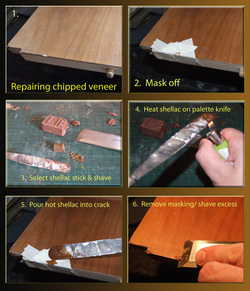 Click to enlarge
Click to enlarge
Once the wood finish is agreed, we start work on the cabinet to restore it back to new.
Showing some of the repair techniques to fill in chipped veneer, scratches and small bruises.
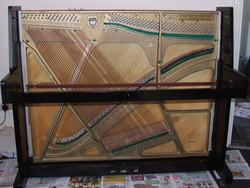
The piano was then completely stripped down and repolished
Ebony Satin French Polish (brushed effect) - starting with the outer cabinet parts. Pedals & mechanism/ felts also removed to allow for the polishing process.
Finished product >>> Weinbach Upright Piano (dated 1989)
See slideshow for some details of the refurbishment <<Click Here>>
AA PIANO TUNERS UK // M: 0791 485 4072 E: [email protected]
W: www.aatuners.com
W: www.aatuners.com
